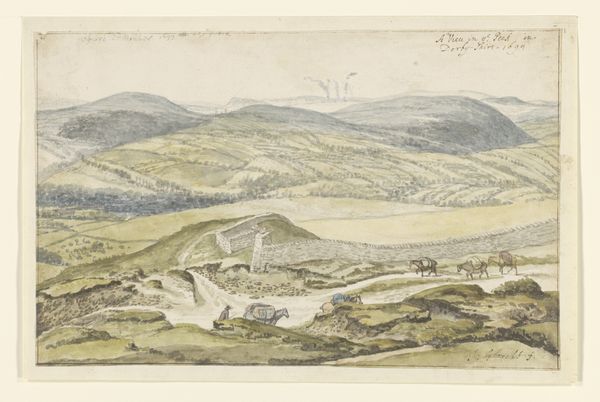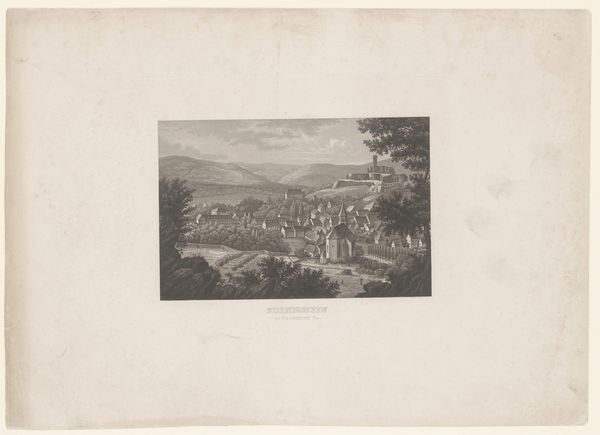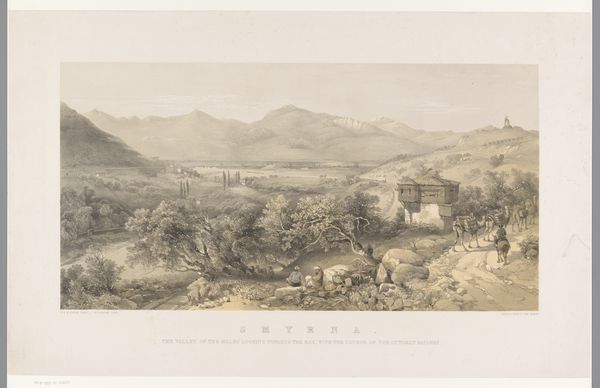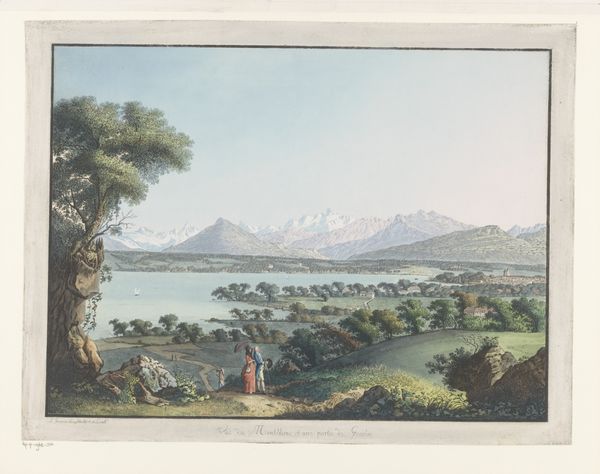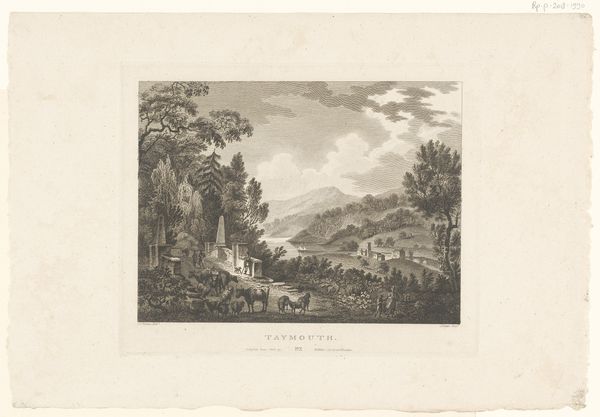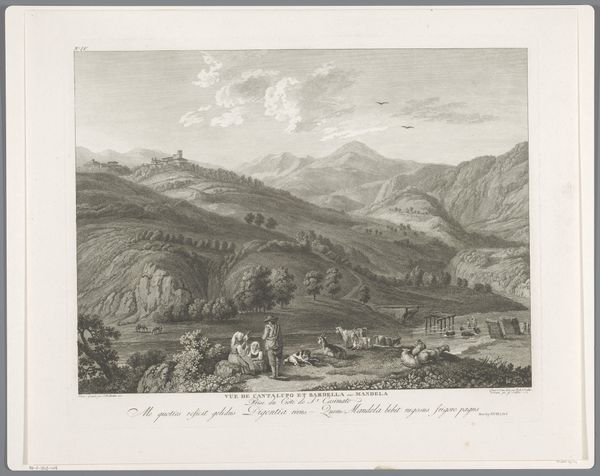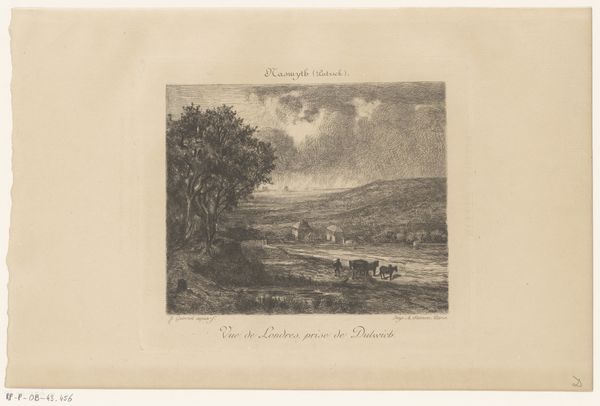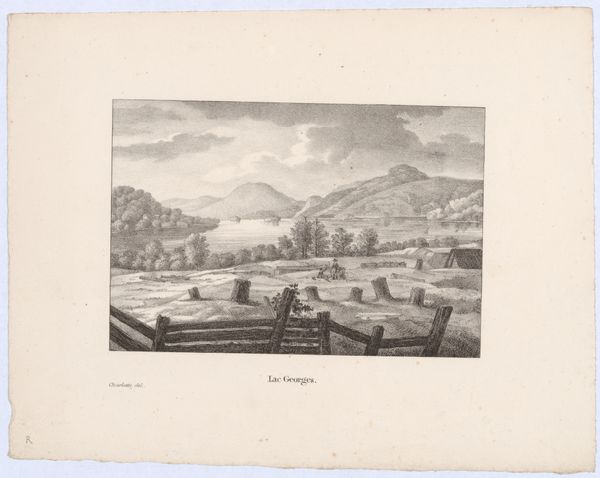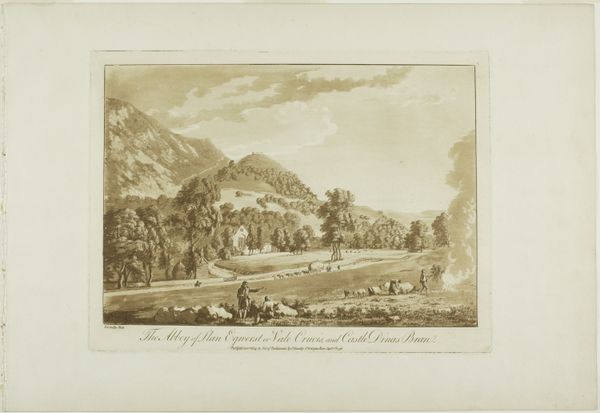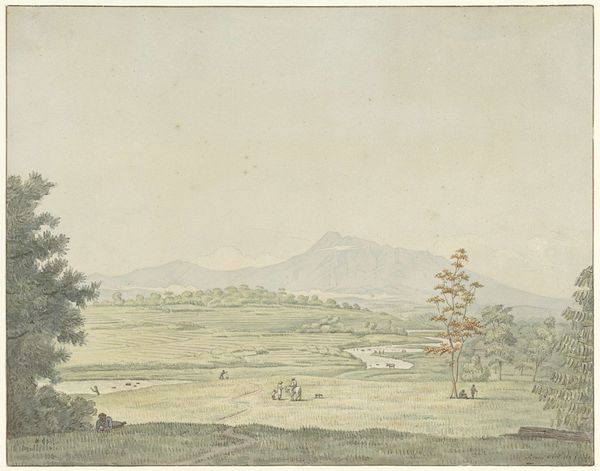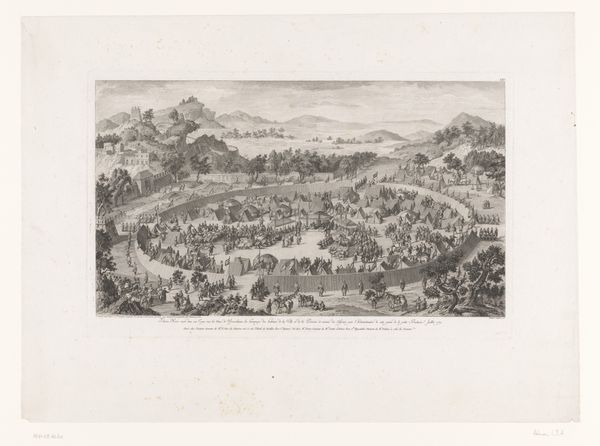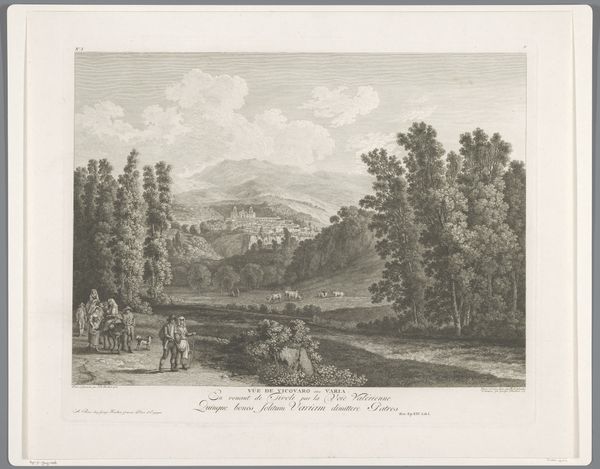
painting, watercolor
#
painting
#
landscape
#
watercolor
#
orientalism
#
academic-art
#
watercolor
Dimensions: height 543 mm, width 729 mm
Copyright: Rijks Museum: Open Domain
Curator: Here we have Carl Wilhelm Mieling's "View of a Landscape on the Dieng Plateau," a watercolor from around 1853-1854. It resides here at the Rijksmuseum. Editor: Immediately, the sense of openness strikes me, doesn't it you? The broad sweep of the landscape, the almost washed-out pastels...It feels incredibly serene, but almost voyeuristic. Like we're peeking in on a world that exists separate from our own timeline. Curator: Absolutely, and it’s crucial to remember that Mieling, situated within an orientalist tradition, was offering a European audience a very particular vision of the East. The placid figures on horseback, the crumbling architecture… it evokes both the exotic and, perhaps, a subtle commentary on the perceived decline or stagnation of the region. Editor: Ooh, good point! You almost forget the colonial gaze. But tell me, do you think he intentionally uses those subdued colors to emphasize that 'decline,' as you put it? Or am I reading too much into the fact that it basically looks like it’s been bleached by the sun? Curator: It's a sophisticated point. The palette definitely plays a role, whether consciously or not. Academic art of the time frequently romanticized such scenes, but we also need to be aware of how this romanticization intersects with power dynamics, how it can contribute to the creation of stereotypes or reinforce existing hierarchies. Who are these figures on horseback, for instance? What is their relationship to this "landscape"? Editor: Well, if they’re just tourists like us, then I suddenly feel terrible! I was hoping this was going to be a simple meditation on nature! Maybe they are officials mapping the territory—we definitely shouldn't forget about what those people were doing. Either way, that one dilapidated temple is such an intriguing symbol to put front and center, but maybe I was too busy dreaming of tropical vacations... Curator: That tension is precisely where the work generates dialogue, doesn't it? It’s pretty; it invites you in with its scale and details, but then… it asks us to engage with those loaded historical contexts. What narratives are being emphasized—and what stories are noticeably left out? Editor: So next time I go somewhere "exotic," instead of sketching, I should probably just, you know, talk to the locals... Curator: It certainly couldn't hurt! Editor: What a layered and strangely moving experience this piece provides... it's more complex than I first gave it credit for.
Comments
No comments
Be the first to comment and join the conversation on the ultimate creative platform.
